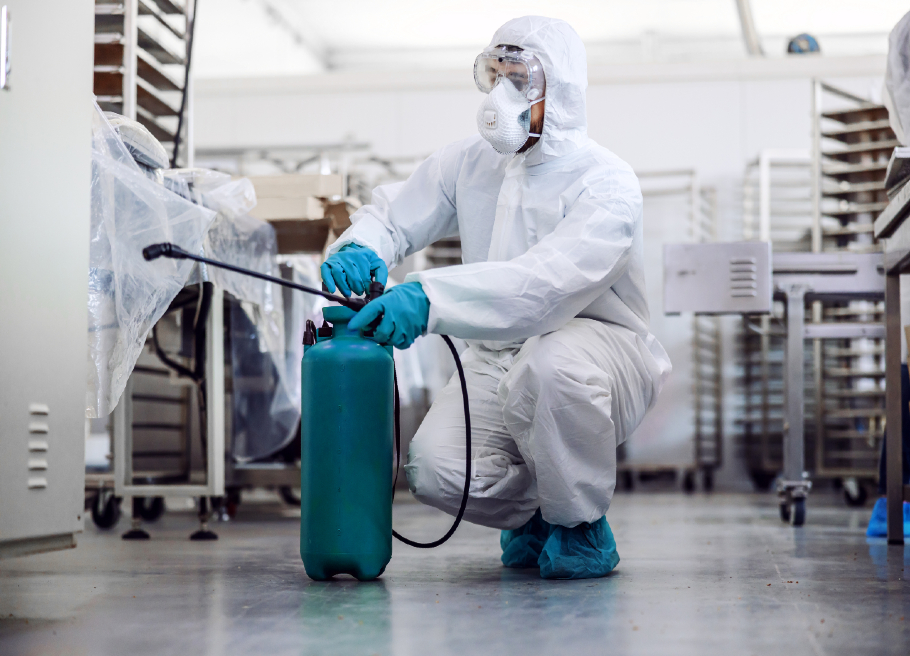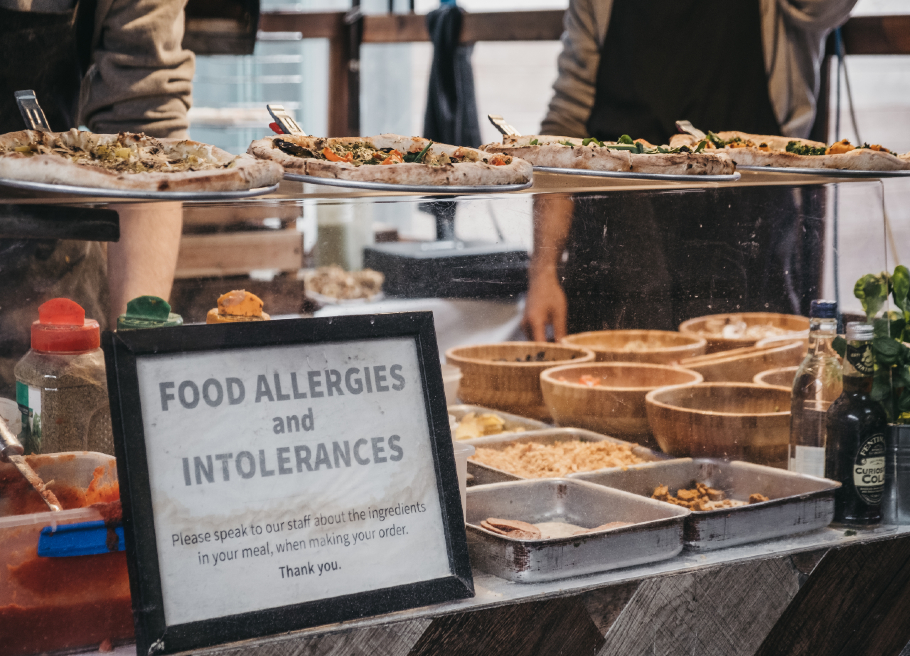2024 Food Safety Forecast: Embracing Transparency and Advanced Technology
By Andrea Tolu
From year to year, the food safety landscape is fast moving and ever changing, so it’s a challenge to know what’s next and what industry professionals should prepare for in 2024. To gain insight into potential trends, GFSR consulted with five industry experts who shared their expectations and discussed which food safety trends likely to emerge in the coming months.
Access to more information than ever before
For Kevin Byrne, CEO of FSQA Solutions, a food safety consultancy based in New York, last year was all about change.
“We had things from sesame becoming a major food allergen, to pathogens surpassing allergens as the number one reason for recalls in the U.S., to the words ‘food safety culture,’-becoming a regular part of our vocabulary,” he said.
But in 2024, he’s expecting information and data to be top of mind.
“We’re going to have access to more information than ever before,” Byrne said. “In 2023 we started to talk about the ability to identify the individual plot of land that something was grown on, or to print the exact production shift when something was manufactured on the label. Thanks to AI, we’ll be able to improve overall traceability and incorporate real time reporting into food safety, and even possibly do some predictive analytics to identify upcoming food safety issues.”
It’s not only about fixing more issues but also managing more data and levels of compliance. All this is having a negative impact on stress levels and mental health of food safety professionals.
Businesses catching up with regulations
“One constant in the food industry is businesses catching up with regulations,” said Felicia Loo, a Food Safety Management Consultant based in Vancouver.
Globally, regulations are complex and companies fall behind, which is a costly mistake.
One example was the recalls of several brands of caffeinated energy drinks in Canada because of poor labeling and excessive caffeine content,” Loo said. “They were imported from the U.S. without understanding the different regulations between the two countries. Recalls started in July 2023, but we’re still seeing more of them being added today.”
This rush to compliance will continue in 2024.
“Based on on the requests we receive from clients, I expect to see more businesses, especially the smaller ones, catching up with the Preventive Control Plan implementation requirements of Safe Food for Canadians,” Loo said. “Although the SCFR regulations came into effect in 2019, many small businesses are not aware of the requirements.”
“Further, after the pandemic ended, CFIA (the Canadian Food Inspection Agency) continued to do more inspections to make sure that both importers and manufacturers don’t simply declare their compliance but also prove it with the proper documentation.”
Transparency and consumer trust
For Sarah Krol, Vice President of Food Supply Chain at NSF, 2023 was a year when “food safety remained top priority throughout the supply chain and businesses continued to mitigate risks through investments in training, technology and infrastructure.”
This new year, however, transparency and consumer trust, will become more important than ever before.
“Consumers are increasingly seeking clean labels with minimal processing. One recent example is that, at the end of last year, the FDA proposed a rule to prohibit the use of brominated vegetable oil (BVO) and started to reevaluate the safety of Red Dye No. 3 in food and beverage products,” Krol said.
To gain and keep consumer’s trust, Krol believes food brands will still prioritize the provenance and sustainability of their products. “This will be manifested through more prominent labels, natural and minimally processed ingredients, validated claims and third-party certifications on social accountability, antibiotic-free, organic, and more,” she said.
Stress and burnout of food safety professionals
Kitty Appels, CEO of Food Safety Experts, a consultancy based in the Netherlands, believes there won’t be significant differences between this and last year, at least at global level.
“2023 was defined by avian flu, which now has somewhat subdued in Europe, but it’s much more present in the US, Canada and Brazil, and geopolitical conflicts, with the war in Ukraine and the recent attacks to shipping vessels in the Red Sea,” Appels said. “Those issues are disrupting supply chains globally, increasing price pressure and creating more opportunities for food fraud, which in turn increases the risk of food safety incidents. In 2024 we’ll likely continue to see more of the same.”
Appels, who also works as a stress and burnout coach for QA professionals, highlights another worrying trend for this year: “In our customer base, we’ve noticed a significant increase in workload for food safety professionals. Companies are doing more work with the same number of people, and in some cases, even with less people. It’s not only about fixing more issues, but also managing more data and levels of compliance. All this is having a negative impact on stress levels and mental health of food safety professionals.”
Baby steps towards technology adaptation
For Dr. Vera Dickinson, Founder and CEO of Innova-Q, a company that helps food businesses harness data to obtain real time and predictive quality and safety insights, 2023 was very similar to the year before.
“Food businesses were still exposed to significant pressures in terms of food quality and safety, profit margins, and supply chain issues,” she said.
Although she believes that advanced technology, like AI or blockchain, can solve a lot of these challenges, she doesn’t envision any radical changes this year.
“I’d love to be able to say that 2024 will be the year of advanced technology adaptation,” Dickinson said. “But the truth is, the process is incredibly slow. Rather, we’re going to continue to make baby steps, starting from the modernization of traceability practices.”
The breakthrough moment for advanced technology adoption, however, might be around the corner.
“I believe that 2024 will show the value of advanced technology solutions and 2025/2026 will be about getting up to speed with them, both in the U.S. and globally,” Dickinson said.
This hope, however, comes with a caveat: “Food manufacturers tend to be compliance-driven and will adopt a change quickly if it is a regulatory requirement,” says Dr. Dickinson. “We need to work together with regulators to motivate the industry to leverage advanced technology for the purpose of reducing foodborne illness and food waste.”
About the Author
Andrea Tolu is a freelance writer who works with companies in the food and hospitality industries. Other than food safety, he writes regularly about food regulations, ingredients, and restaurant technology.

-
 FeaturedRisk management
The Cost of a Breach: What a Cyberattack Could Mean for Food Safety Recalls
FeaturedRisk management
The Cost of a Breach: What a Cyberattack Could Mean for Food Safety Recalls
-
 FeaturedRisk management
Securing the Food Chain: How ISO/IEC 27001 Strengthens Cybersecurity
FeaturedRisk management
Securing the Food Chain: How ISO/IEC 27001 Strengthens Cybersecurity
-
 FeaturedRisk management
Revolutionizing Food Safety Training: Breaking Out of the “Check-the-Box” Mentality
FeaturedRisk management
Revolutionizing Food Safety Training: Breaking Out of the “Check-the-Box” Mentality
-
 GFSI Standards
GFSI 2025: Building Trust, Tech-Forward Solutions, and Global Unity in Food Safety
GFSI Standards
GFSI 2025: Building Trust, Tech-Forward Solutions, and Global Unity in Food Safety
-
 FeaturedFood Safety
Integrated Pest Management: Strategies to Protect Your Brand’s Reputation
FeaturedFood Safety
Integrated Pest Management: Strategies to Protect Your Brand’s Reputation
-
 FeaturedFood Safety Culture & Training
No Open Door Policy: Challenges That Impact Pest Control in Food Processing Plants
FeaturedFood Safety Culture & Training
No Open Door Policy: Challenges That Impact Pest Control in Food Processing Plants




